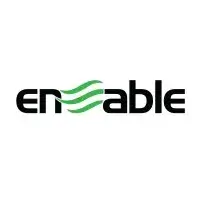Ready to build your own Founder-Led Growth engine? Book a Strategy Call
Frontlines.io | Where B2B Founders Talk GTM.
Strategic Communications Advisory For Visionary Founders
Actionable
Takeaways
Industry networks unlock faster GTM than traditional outbound:
Implentio's first customers came from Jason's 20-year operations network—direct texts to brand founders, warm intros to ops teams, relationships from the same trade shows and conferences. His approach eliminated typical B2B sales cycles by going straight to decision makers who already trusted him. For founders with deep industry tenure, exhausting warm networks before building cold outbound infrastructure delivers conversion velocity and cycle time advantages that justify founder time investment despite limited scale.
Partner with companies who own your ICP's budget allocation:
Implentio partnered with fractional CFOs who control purchasing decisions and immediately understand ROI. Jason explained their appeal: "They see the numbers, they understand the numbers. So I show them an ROI and they're like, boom, no brainer." The framework: identify which third parties influence or control budget decisions in your category, then build rev-share referral programs. Mapping your buyer's external advisors and service providers can shortcut enterprise sales cycles.
Turn industry incumbents into distribution partners by solving their client problems:
Despite addressing 3PL billing issues, Implentio positioned 3PLs as partners rather than adversaries. Jason's philosophy: "I'm not a 3PL adversary. I actually love 3PLs. I think they serve an important need." Implentio offers 3PLs a value-add service for their merchant clients while gaining direct customer access. The framework works when you solve what incumbents are contractually responsible for but operationally struggle to deliver, without competing for their core revenue.
Pre-qualify partnership ROI using your own customer economics:
Implentio learned that partner enthusiasm doesn't correlate with lead quality. Jason's example: "That $50 million brand might have $1,000 AOV. And so the number of transactions and shipments they're doing, there's just not enough there for there to be a good ROI on our solution." Implentio now evaluates partner customer lists against specific transaction volume thresholds before investing in relationships. Document minimum viable customer criteria and require partners to verify their portfolio meets those thresholds to prevent pipeline pollution.
Subject matter expertise scales through teaching, not content production:
Jason built Implentio's founder brand despite having no Instagram, Facebook, or TikTok, using one principle: "Knowledge is only good if you transfer it and you pass it on." He prioritizes teaching operations concepts over polished content, measuring success by whether someone learns something valuable regardless of conversion. His insight: "If I can teach somebody something, that's a win for me. Even if they don't sign up for my platform." Sophisticated buyers assess expertise through insight depth, not posting frequency.
Wedge entry with acute universal pain, then expand horizontally:
Jason's long-term vision is "COO in a box"—comprehensive operational intelligence spanning supply chain, fulfillment, and customer service. But Implentio launched with 3PL invoice reconciliation because every scaled e-commerce brand outsources fulfillment and struggles with billing validation. The wedge criteria: universal problem (every target customer has it), acute pain (directly impacts margin), and immediate ROI (quantifiable savings exceed platform cost). Once embedded in the finance workflow, Implentio can expand into adjacent operational data problems without re-selling the value of centralized ops intelligence.
Conversation
Highlights
How Implentio Turned Operations Expertise Into a Partnership-Driven GTM Engine
Every e-commerce operations leader has opened the same nightmare: a PDF invoice demanding $100,000, accompanied by a CSV containing thousands of rows of transaction data. No itemized breakdown. No validation methodology. Just “pay me $100,000” and a data dump that would take days to audit—time operations teams don’t have while managing supply chain, fulfillment, warehousing, and customer service simultaneously.
Jason Bang lived this for twenty years—from junior analyst through COO roles—before building Implentio to solve it. In a recent episode of Category Visionaries, Jason Bang, Chief Product Officer and Co-Founder of Implentio, detailed how the company automates workflows between e-commerce merchants and their 3PLs, starting with invoice reconciliation that directly impacts margin.
The Margin Erosion Nobody Audits
“I can’t tell you how painful it is in the 3PL space,” Jason explains. “For example, with an invoice, I get an invoice from them. It’s thousands of rows of data and a CSV and a PDF that says pay me $100,000 and that’s what you get.”
The problem compounds because operations teams function as cost centers, kept intentionally lean. “They’re so often viewed as cost centers. So they’re generally super lean. Try to keep them as lean as possible, keep them as efficient as possible, but it means they’re spread super thin,” Jason describes. Adding omnichannel distribution (DTC site, Amazon, wholesale) increases complexity without proportional headcount increases.
The financial impact reveals itself only when teams invest audit time. “There’s been many times in my career where we’ve taken the time to dig deep and every time we do there’s a ton of issues and realize we’re leaving money on the table and that’s all margin. That’s going out of the P&L.”
This lived experience shaped Implentio’s wedge strategy. Invoice reconciliation is universal (nearly every scaled e-commerce brand outsources fulfillment), acutely painful (directly erodes margin), and delivers quantifiable ROI (recovered overcharges exceed platform cost). But Jason’s vision extends far beyond billing. “You’re COO in a box,” he describes the long-term platform—comprehensive operational intelligence across every operations function.
Network Exhaustion as Primary GTM Motion
Most SaaS founders start with SDR-driven outbound or paid acquisition. Jason’s twenty-year operations career provided a different entry point: direct access to every decision-maker in his ICP.
“We all go to the same networking events, we all go to the same conferences and trade shows. We all know a lot of the same VCs,” Jason explains. Early GTM consisted of texting brand founders from his existing network, getting warm introductions to their operations teams, demonstrating ROI, and closing deals—often without formal sales processes.
This approach delivered velocity advantages: shortened sales cycles, higher close rates, immediate credibility. The constraint: scale limits at network boundaries. Jason recognized this required transitioning to scalable channels while maintaining the founder-led foundation.
Building a founder brand as an operations leader presented unique challenges. “I don’t have an Instagram, I don’t have a Facebook, I don’t have a TikTok. I’ve been very anti social media my whole life,” Jason admits. Operations professionals typically work behind the scenes, managing spreadsheets and supply chains rather than creating marketing collateral.
His solution aligned with core values rather than forcing unnatural behavior. “Knowledge is only good if you transfer it and you pass it on,” he explains. “My favorite thing to do is teach people things. If I can teach somebody something, that’s a win for me. Even if they don’t sign up for my platform, even if it never goes anywhere, if I know somebody on the other end has learned something, that’s a win.”
This teaching-first approach builds subject matter authority without requiring content production theater. For technical founders uncomfortable with personal branding, it provides a replicable framework: deliver genuine educational value consistently, measure success by knowledge transfer rather than engagement metrics.
Converting Potential Adversaries Into Distribution Partners
Implentio’s most counterintuitive GTM lever involves partnering with 3PLs—the companies whose billing complexity creates the problem Implentio solves.
“I’m not a 3PL adversary. I actually love 3PLs. I think they serve an important need, especially in the e-commerce space,” Jason emphasizes. “I partner with 3PLs. I want to work with them to help bring a better service to their clients and in turn I get access to those clients.”
This works because transparent billing actually strengthens 3PL-merchant relationships. Merchants distrust opaque invoices; 3PLs struggle with the administrative burden of explaining charges. Implentio removes friction from both sides while gaining distribution access.
The partnership model extends to fractional CFOs, who became high-value referral sources. “We work with a lot of fractional CFOs. And CFOs, they work with a ton of E commerce companies. They know the financials in and out. They’re my favorite party to sell to because they see the numbers, they understand the numbers. So I show them an ROI and they’re like, boom, no brainer. I want this solution in place.”
CFOs control budget allocation and immediately comprehend financial impact—eliminating the lengthy justification cycles typical in operations tool procurement. They also serve multiple e-commerce clients, creating referral leverage that individual operators lack.
Partnership ICP Qualification Through Unit Economics
Partnership enthusiasm proved uncorrelated with lead quality. Jason learned this through discovery calls that revealed misalignment ten minutes in.
The core issue: Implentio’s model requires specific transaction volumes to generate ROI. “That $50 million brand might have $1,000 AOV. And so the number of transactions and shipments they’re doing, there’s just not enough there for there to be a good ROI on our solution,” Jason explains.
This creates qualification complexity that standard firmographic filters can’t address. LinkedIn Sales Navigator can’t search for “e-commerce brands processing 10,000+ monthly shipments.” Partner customer lists require manual evaluation against volume thresholds.
Jason’s framework: ROI-first partnership vetting. “My ethos has always been, I don’t want to cost somebody more than I save them. And so we do a pretty deep evaluation to vet a partnership before we go too deep into it and say, is there really an opportunity here? Because if not, we’re never going to get paid, they’re not going to get value out of the platform.”
This means requesting partner portfolio details upfront—AOV ranges, monthly shipment volumes, fulfillment complexity—before investing in relationship development. Partners who can’t or won’t provide this data self-select out, preventing pipeline pollution downstream.
The Operations Technology Gap
Jason’s product vision stems from direct observation of tool disparity. “Anybody who’s out there and looks at their E. Com tech stack, tell me what tools your ops team is using. Compare that to what your marketing team is using,” he challenges. “Marketing has endless solutions, attribution models, retention models, they have paid acquisition stuff, analytics, they have an endless buffet of tools. Ops teams, they have spreadsheets, they have an ERP, maybe an inventory management system or two, and that’s about all they got.”
This gap exists despite operations’ direct profitability impact. Jason characterizes operations leaders as “some of the most underrated creatives” constrained by manual data work. “Every problem we deal with is complex, has tons of different levers, and the best ops people are creative problem solvers. But to be creative, you have to get out of the weeds.”
Current workflows require hours compiling data before analysis begins. “If I want to solve a problem, I got to start with data. How do I get that data? I’m pulling together spreadsheets, I’m spending hours trying to understand the data and derive outcomes and then turn that into action.”
Jason envisions AI-powered operational intelligence eliminating this data compilation burden. “For somebody to come to our solution in the future state, interact with our agent and say, I want this data point over this period of time and I want to compare it to this other data point to do that themselves today, it’s like an hour, two hour, maybe a day long exercise. I’ve already got all the data, I’ve already got all the information and I have this powerful technology that I can just give them those answers immediately. Nothing like that exists today.”
This vision positions Implentio as operational infrastructure—embedded in daily workflows, continuously processing transaction data, ready to answer any analytical question instantly. The invoice reconciliation wedge establishes this infrastructure presence; expanding capabilities becomes extension rather than new sale.
Embracing Founder Discomfort
Jason’s candor about discomfort provides validation for technical founders navigating similar transitions. After two decades in operations—characteristically behind-the-scenes—building public presence required fundamental behavioral changes.
“You think about like the nature of my career. I’ve been in operations and we’re usually behind the scenes teams. We’re not accustomed to making marketing collateral and coming up with content ideas and strategies where we’re in spreadsheets and data and trying to get supply chains flowing and working. So it’s such a foreign thing,” Jason reflects.
His perspective on the discomfort: “It’s one of the things I’ve loved the most about starting a B2B SaaS company is it’s after 20 years in an industry and in a role and in a career to do something new and have this sort of exciting venture where, yeah, it’s uncomfortable. I’m learning how to be a Persona, learning how to get my name out there in order to get Implentio out there. It’s actually a lot of fun. It’s tough, it’s uncomfortable, but I’m loving it.”
This reframe—discomfort as evidence of growth rather than misalignment—helps technical founders persist through the awkward early phases of founder-led marketing.
From Wedge to Platform Vision
Implentio’s current traction with invoice reconciliation masks platform ambitions. Jason describes future state as operations teams’ “home where you can go to get data and information at your fingertips, get answers at your fingertips.”
The wedge-to-platform sequencing follows deliberate logic. “You got to niche down, you got to find your entry point into the market,” Jason explains, crediting this advice to experienced founders who mentored him. “This was just such an obvious no brainer that, I mean you think about every E commerce brand out there is probably working with a 3PL. Very few do their own fulfillments. And they all have these huge bills, they all have the same problem and nobody’s addressing it. So like from a go to market, it just made a ton of sense. Immediate product, market fit.”
Once embedded through invoice reconciliation, expanding into adjacent operational data becomes natural progression. “It sort of is my entry point to then start tackling all the cool stuff beyond that where especially leveraging AI agential workflows and starting to bring more powerful tools to operations teams because they’ve frankly never had anything.”
The ultimate goal: “I want to unleash operators to be highly creative, highly actionable counterparts to the rest of the organization and actually do the things that they’re really good at versus being in spreadsheets all day.”
For founders evaluating wedge strategies, Jason’s framework provides clear criteria: select entry points that are universal across your ICP, deliver acute pain (quantifiable financial impact), and provide immediate ROI that justifies adoption. From that embedded position, platform expansion becomes iteration rather than re-selling fundamental value.
































































